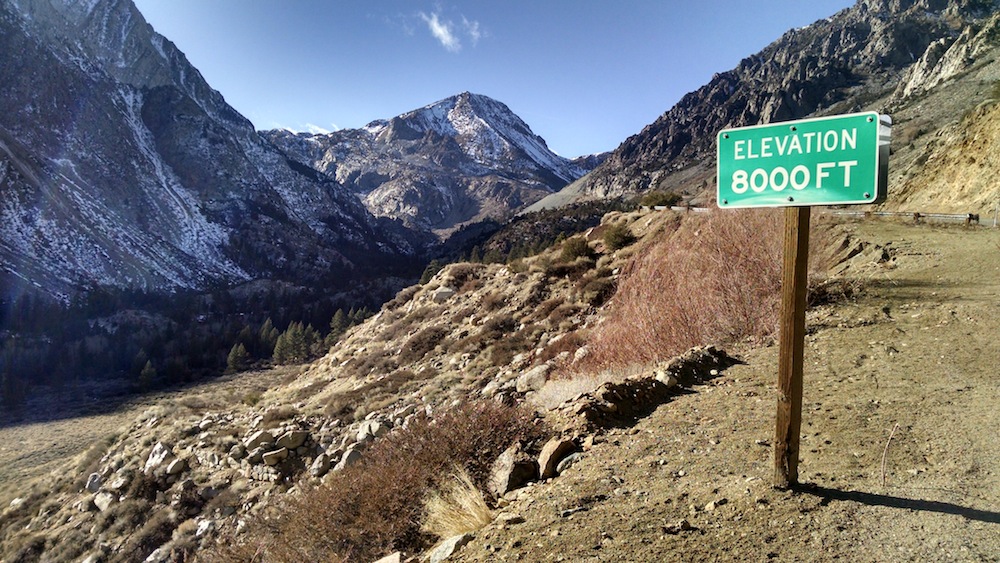California's Extreme Droughts Blamed on 'Ridiculously Resilient Ridge'

The weird weather pattern that hatched California's ongoing drought is becoming more common, and could bring more extreme dry spells in the future, a new study finds.
California is suffering its worst drought in 1,200 years because of a persistent atmospheric "high" parked just offshore. This high-pressure ridge — aptly named the "ridiculously resilient ridge" — deflects winter storms northward, away from California, according to the researchers.
Winter storms are critical for California's water supply; the state receives 75 percent of its precipitation in the coldest months. The blocking pattern also triggers higher temperatures on land and in the coastal ocean. [The 5 Worst Droughts in US History]
The ridge appeared in 2012 and received its nickname in December 2013 from Stanford University Ph.D. student Daniel Swain. At its greatest extent, the "RRR" stretched along the entire West Coast, from California north to Alaska. This sort of high-pressure system has emerged more frequently in recent decades, according to new research from Swain and his colleagues. The results were published today (April 1) in the journal Science Advances.
Swain analyzed historical data from the U.S. National Climatic Data Center to identify unusual weather years in the past. Along with high temperatures and drought, the researchers also looked for other extreme weather events, such as very wet or very cold years. Then, Swain worked backward to find out what the atmospheric pressure patterns were like when the weather took a severe turn for the worse.
"We're not using climate models; we're using real-world observations," Swain told Live Science. "We think it's critically important to consider the extremes, rather than changes in what's going on in the average, because for most practical purposes, a little above or a little below is manageable. The problems start to arise when you have these extreme events."
On average, California still receives about the same amount of precipitation as in decades past, the study reported. (The historical data cover climate observations from 1949 to 2015.) But the variability between wet and dry cycles has increased in recent decades, Swain said.
Sign up for the Live Science daily newsletter now
Get the world’s most fascinating discoveries delivered straight to your inbox.
The frequency of a specific North Pacific atmospheric pattern — one akin to the ridiculously resilient ridge — significantly increased over the 67-year period, the study reported.
That means more drought years, though the frequency of extreme wet years stayed the same. "We have high confidence that specific dry and warm patterns increased in recent decades, but the wet patterns have not decreased and may have actually increased," Swain said. "The problem is that we see the extreme droughts or flood events more frequently." [Dry and Dying: Images of Drought]
The new findings could help forecasters better understand how California's weather may shift in response to global warming. "The next step is figuring out why we're seeing this and what is the real cause. Then, we can assess whether climate-model predictions for the future are consistent with what we really should expect. We might be able to have some year-to-year predictability, which could help in preparing for these events," Swain said.
The research fits with climate-model predictions of more frequent and intense weather events in the coming decades — drier droughts and heavier rains.
California's current drought has been particularly severe because of rising temperatures, which several different research groups attribute to human-caused global warming. The heat bakes what little moisture there is right out of the ground. The ridiculously resilient ridge adds another level of aridity on top of these conditions.
The stubborn ridge mostly disappeared in winter 2015-2016, a casualty of a huge El Niño changing Pacific Ocean weather patterns. But the system could reappear when ocean temperatures revert from warm to normal or even below-average temperatures, which is what happens during La Niña events. The two patterns are part of the El Niño Southern Oscillation, or ENSO, a natural climate fluctuation in the Pacific Ocean.
Follow us @livescience, Facebook & Google+. Original article on Live Science.











